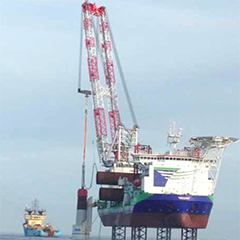Experts in ecology survey innovation, marine consultancy and a host of other specialist legislative disciplines, Baker Consultants are becoming increasingly visible – and respected – in the wind energy arena. Here, they examine the growing influence of underwater noise.
In recent years, following publication of the EU Marine Strategy Framework Directive (MSFD), which requires EU member states to maintain Good Environmental Status (GES) of their seas, the offshore wind industry has been under increasing pressure to minimise the impacts of its operations on both the physical and biological marine environments. Here, we address the challenges faced by the offshore wind industry in meeting these environmental requirements. We focus particularly on the impact on sensitive species, like marine mammals and fish, of those operations that generate high levels of underwater noise, and discuss how the use of real-time monitoring can provide a solution.
The MSFD and implementation plans
Many EU countries have responded to the MSFD by designing their own implementation plan to meet MSFD criteria and ensure that Good Environmental Status of their seas is maintained. Due to the differences between EU countries’ implementation plans, requirements for monitoring of underwater noise during operations that may generate high levels of noise (such as piling and blasting) are not standardised but generally focus is on two elements:
1. The need to demonstrate that measurements of underwater noise taken during operations match the underwater noise levels predicted at the planning stage and as part of the environmental assessment, thus demonstrating the accuracy of forecasting.
2. The need to ensure that operations do not have a negative impact on protected marine species, with particular focus on commercially important fish species and all marine mammals.



























